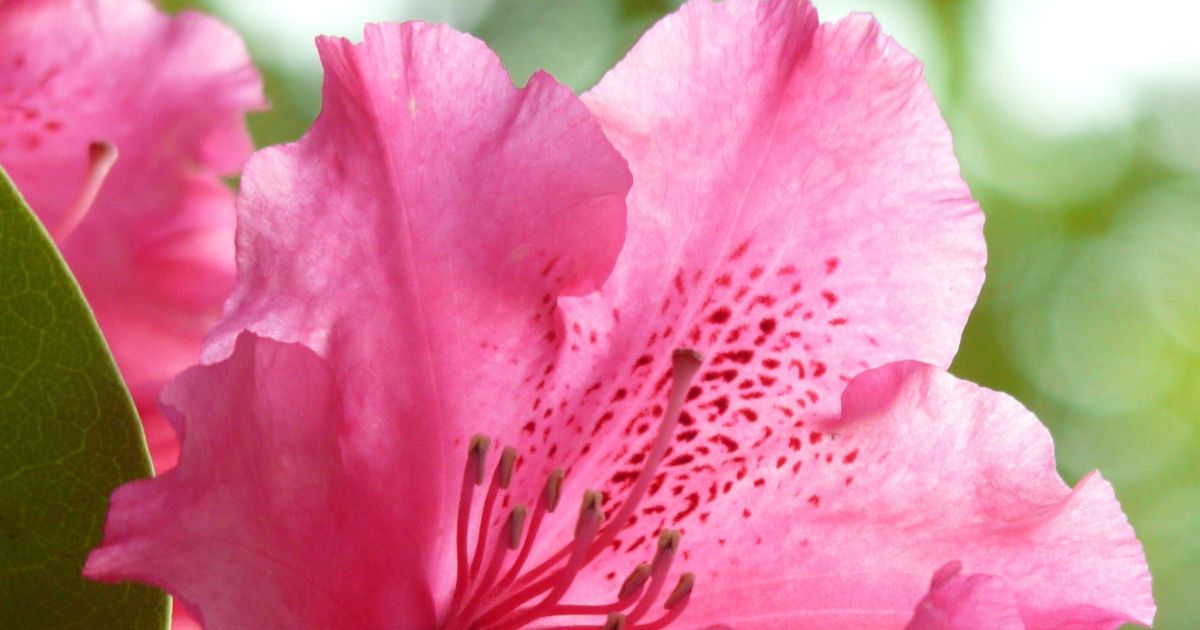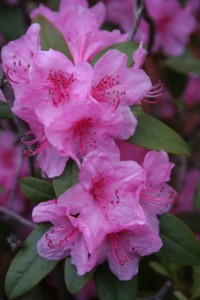Great Plants for Northern Gardens: Day 3 — Northern Lights Azaleas
In early spring, gardeners are hungry for color. One of the best ways to get that color? By planting spring flowering shrubs. Northern Lights azaleas are rock-solid, hardy members of the rhododendron genus that were bred at the University of Minnesota. The Northern Lights azaleas come in a variety of pink, white, salmon and yellow colors and tend to bloom early to mid-May, about the same time as daffodils.
Azaleas are not difficult to grow, but they have some specific requirements. They need sun or partial sun, but do not tolerate heat well. A hot area next to the house would not be a good location for Northern Lights, nor would a windy area. Their root systems are shallow, so they need to be watered during dry periods, and they do best when planted in soil with lots of compost or other organic matter to retain moisture. If your soil is clay, be sure to add plenty of organic matter.
Azaleas (and rhododendrons) also are acid-loving plants, and do best in a soil with a pH of 5.5 or lower. Twice a year fertilizing with an acid fertilizer will keep the plants growing and blooming.
Another super hardy rhododendron is the ‘P.J.M.’ rhododendron, which has the pink color of many azaleas and rhododendron but tends to be larger in size than the Northern Lights azaleas.
What’s your favorite shrub for spring flowers?



Yes, the Northern Lights Azalea was developed at the University of Minnesota, but all credit gos to my father, Albert Johnson. At the University Arboretum, his original pink flowered Northern Lights is featured all over the Arboretum. It was the first azalea to flower prolifically after minus 40 winters, and led to a wide spectrum of other colors developed by others following my father’s death. But the original development credit gos solely to my father, and I like to see see his brilliant work given credit.
Here in southwestern Virginia we just planted a tri-lights azalea so lovely that I started researching others in this Lights series. It seems Albert Johnson’s horticultural “grandchildren” have spread their beauty far and wide! I too join in thanking your dad and hope someday to visit the university arboretum where this all started.
I am very thankful to your Father Albert Johnson for developing such a gorgeous azalea. I have the pink that I got approx. 27 years ado. It is now 10 ft fall, yes. It was easy to grow. I have a picture of it on my phone if you would like to see it. Many people stop me when they see it, that gorgeous. What a tribute to your Dad.
I am so delighted to learn about your Father! I’ve had his Pink Northern Lights for almost 30 years now. Its fragrance is heavenly! I also have Mandarin Lights. Both are huge now, and the color of their blooms and their health and vigor are breathtaking. Thank you Albert Johnson!
This article gives a fairly complete history of the Northern Lights azaleas, including the role played by Albert Johnson. https://www.azaleas.org/wp-content/uploads/azalean/31/2/articles/Northern_Lights_Azaleas.pdf
Hi Larry. Your father was a very kind person. I came to U of MI Minneapolis/St.Paul in 1974 as a landscape architecture major. There was an apple cider pressing at the Landscape Arboretum. I came to the Horticulture Building to get a ride. Your father was there and kindly took me to the arboretum. When you are young, often one does not know the credentials of those you meet, but little did I know your father was one of the people I would grow-up to admire. In your father’s honor (and Leon Snyder, Harold Pellet, and R. Mullin), I grow the northern lights azalea series, many are over 25 years old in my garden, and each spring, many people come to see them in bloom. I live in central Michigan (Gratiot County) just south of where Leon Snyder grew-up and near where the late Ralph Rapson lived (the former head of architecture at the U of MI), as I am a professor in landscape architecture at MSU. I first saw your father’s efforts in the spring of 1975 next to the entrance of the St. Paul campus library. I was so impressed, I had never seen anything like it (I was from the Upper Peninsula of Michigan, Superior, Wisconsin, and Edmonton, Alberta), but at the time these azaleas were not available. I am very pleased they are available now. Your father’s legacy lives on– he was a great man. I have been a member of the Minnesota Landscape Arboretum for over 40 years.
Hello Larry , your father created one in a million shrub. I have about 8 of Rosy Lights Azalea and 5 of Mandarin Lights a few yellow lights. Some are 10 feet. They are breathtaking in the spring. I have a acre garden and people comment every spring on them. Your father has blessed many landscapes. Thank you and you Father so kindly ❤️
Thank you, thank you, thank you Albert Johnson. I have two northen lights azaleas, an orange and a yellow one. They give me much pleasure when they bloom. Now that I know who has given me this beauty to admire I will say thank you Albert Johnson each time I pass by them.
Hello,
How nice to know the story behind the plant! I live in Montreal, Zone 5b. Out winters are snowy and cold, spring can be warm but frost can occur anytime until mid to end May. Last fall I saw buds on my 2yr old Azalea , I wrapped it in burlap and this spring I removed the protection in Mid March . I noticed buds had fallen off and I think it is due to the way I wrapped the plant. I am wondering, is it necessary to protect it the winter, if yes, how best to protect it. When would be the best time add protection and when to remove any protection?
I did try to salvage some broken branches , any advise on propagation.
Thank you , and wishing you a wonderful gardening season
I’ve never added protection to azaleas that are northern hardy. In your zone, they should do fine without it.
I live in northern Wisconsin z4. I have several of these northern lights azaleas and I have never had to cover them.
Thank you, Albert Johnson, and all the others involved in this great series of rhododendrons. What an astounding legacy. I’m a southern girl who grew up with a mom who sought solace from the demands of 6 children and a husband in her 1/2 acre garden. She loved her azaleas. When my young family moved to Sioux Falls in 1992, I had no idea that one could grow azaleas in such a climate. I started checking out and exploring our library’s copy of “Dirr’s Encyclopedia of Trees and Shrubs”. From that discovery I now have the original pink “Northern Lights”, so fragrant, “White Lights”, “Golden Lights” (one is a more gingery color, could it be “Spicy Lights”?), “Mandarin Lights” and “Rosy Lights” all rather crowded into a small, intimate shade garden. Because of that I have to prune them back after blooming. Benign neglect in pruning and generous rains resulted in a spectacular spring display last year. I took videos of it and am still astounded. It’s pretty obvious that I’m intentionally or maybe just subconsciously attempting to reproduce the lush and luxurious qualities of the southern gardens I knew years ago. The color palette between those beautiful azaleas and the range of colors, shapes and textures of the hostas at their feet, well, it looked to be the work far more gifted gardener than me. This year’s display will be meager as I had to prune back to a manageable size and a very dry late summer into winter drought. But they’ll be back. I absolutely love these special flowering shrubs, and have always appreciated the complex hybridization of so many rhododendron species that it took to produce them. To Dr. Johnson, his colleagues at the University of Minnesota and the Arboretum, my most heartfelt thanks.
I think my mother planted one of the northern lights azalea variety over 30 years ago . I think it was one of the varieties developed by your father! Thank you! What a legacy! It’s gorgeous!